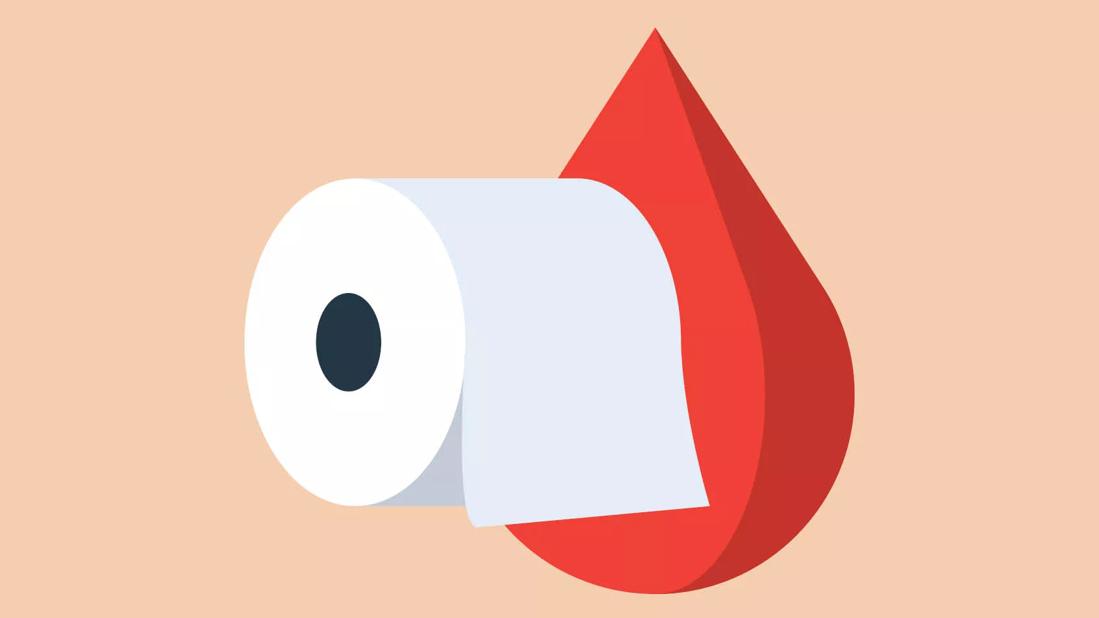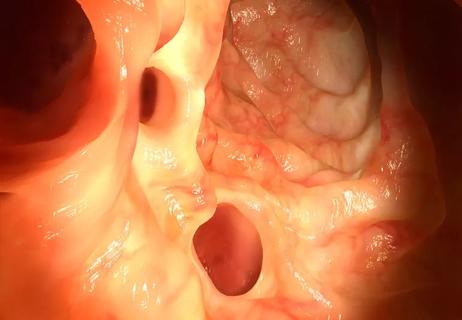Some symptoms you can treat at home, but others require a visit to the doctor

Whenever you discover you’re bleeding, it gets your attention. It’s usually easy to find the source of the blood, but when it’s coming from your rectum, the origin isn’t as easy to pinpoint. That’s enough to make anyone worry. So, what are the most likely sources of rectal bleeding?
Advertisement
Cleveland Clinic is a non-profit academic medical center. Advertising on our site helps support our mission. We do not endorse non-Cleveland Clinic products or services. Policy
Colorectal surgeon Massarat Zutshi, MD, discusses likely causes of rectal bleeding and what your next steps should be if it happens to you.
Rectal bleeding can happen for many reasons, the vast majority of which are benign. The following steps will help you determine if you need to be in contact with a doctor.
Your first task: Determine if you’re actually bleeding.
Before worrying too much about what you’re seeing in the toilet or on your toilet paper, think carefully about what you’ve consumed in the recent past. There are several foods and medications that can alter the color of your stool.
If you’ve established that you are bleeding, your next step is determining the blood’s origin point. That will help you figure out if you need to seek medical attention.
Blood color is one way to narrow down the possible causes of your rectal bleeding. Think of the blood color as indicative of travel time. It takes longer for blood from your esophagus to pass through your body than blood from an anal fissure. During that time, the color and consistency of the blood change. The redder the blood, the closer to your anus the origin point will be. In other words:
Advertisement
Colon cancer typically starts with polyps in your colon. Early detection is the goal here, Dr. Zutshi says. Polyps are typically benign at first, and a surgeon can remove them before they become cancerous if you catch the problem early.
Dr. Zutshi emphasizes that hemorrhoids and anal fissures are responsible for rectal bleeding about 98% of the time. But it’s important to let your doctor know if you experience rectal bleeding so they can rule out any other problems.
Painful rectal bleeding, while certainly unpleasant, isn’t always a sign that something’s seriously wrong. A lot depends on the severity of the pain and where you’re feeling it. Hemorrhoids and anal fissures can hurt. In most cases, though, they either spontaneously resolve themselves or are easily treated by a doctor. Pain or cramping in your abdomen is a different story. If you’re in significant pain, regardless of the cause, you should speak with a doctor.
It may be preferable, but painless rectal bleeding isn’t necessarily less severe than painful rectal bleeding. Hemorrhoids aren’t always painful, but the same is true of colorectal cancer. Not being in pain isn’t a reason to skip a trip to the doctor, especially if you have other symptoms, like changes to your stool or nausea.
Advertisement
If you’re fairly certain that the bleeding is the result of hemorrhoids or an anal fissure, you don’t need to run to the doctor. These are common problems, and you can treat them yourself at home.
There are also things you can do every day to prevent hemorrhoids and anal fissures.
Advertisement
If these home remedies aren’t alleviating your symptoms, or you’re continuing to bleed, it’s time to get medical attention.
Because rectal bleeding has so many causes — some routine, others rare — it’s important to pay close attention to the kind, severity and duration of the symptoms you’re experiencing. Those factors determine the type of medical attention you need and the urgency with which you need it.
Advertisement
Remember, no matter where it’s coming from, blood loss exceeding two pints is a serious medical emergency. Losing more than 4.2 pints of blood is potentially deadly. If your bleeding is that severe, you need an ambulance.
It’s helpful if you can make a note of how long you’ve been experiencing rectal bleeding, if it stops then starts again and how long it lasts.
Your doctor will likely ask you:
Even if you aren’t experiencing problems or noticing any rectal bleeding, Dr. Zutshi emphasizes that it’s vital to begin having colon cancer screenings when you turn 45. She adds that you should start having regular screenings earlier if you have any history of colon cancer in your family. Whenever possible, you should start getting colonoscopies 10 years before the age at which your relative received their cancer diagnosis).
It’s not unusual to be squeamish about butts and guts, but neither is it unusual to have problems with them. Rectal bleeding is a common medical issue that’s usually innocuous. When in doubt, though, swallow your pride and talk to a doctor. It’s better to be safe than sorry.
Learn more about our editorial process.
Advertisement

It’s not an enema or bowel prep, and this colonic hydrotherapy can harm proper colon function

Reducing inflammation is key when you’re in a flare-up, but so is having a preventive nutritional plan in place when you’re not

TikTok trend encourages eating papaya seeds to ‘deworm’

The short answer from a colorectal surgeon

Know the difference between diverticulosis, diverticulitis

Dairy, wheat, seafood, nuts and other foods may trigger inflammation

People with an inflamed esophagus may also have other conditions that cause a nagging, persistent cough

You have plenty of options to fill your belly, but caution is required when preparing meals

The best parenting style balances enforcing rules and showing plenty of love

Tips include cutting back on sugar, focusing on exercise and managing stress

It can be harder to let go when you’ve invested time, energy and emotions — but it might be the healthier choice long term